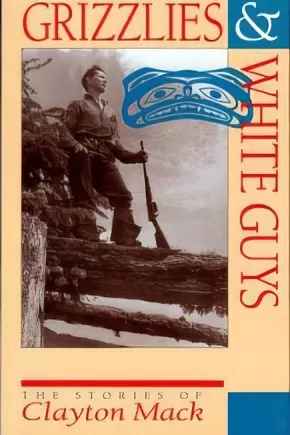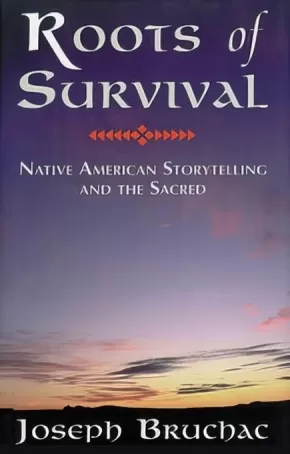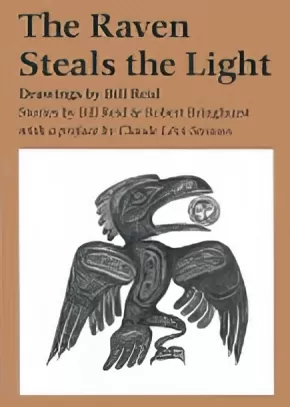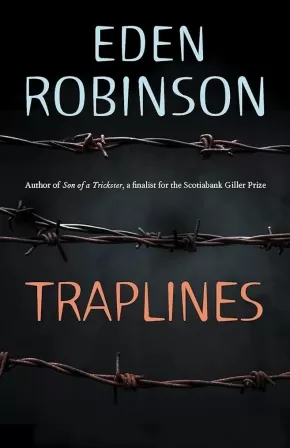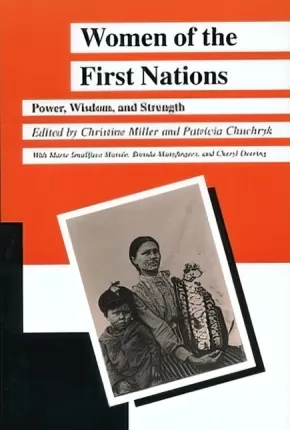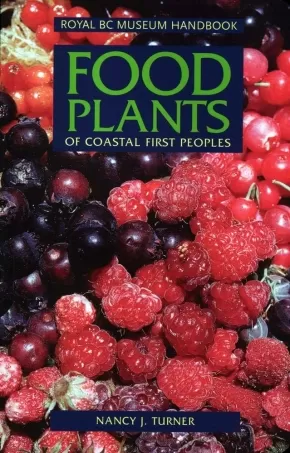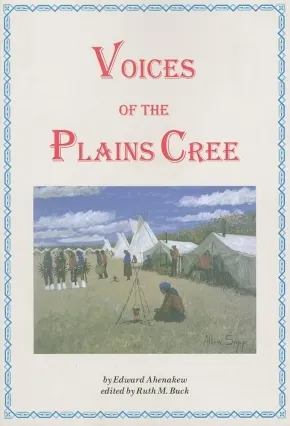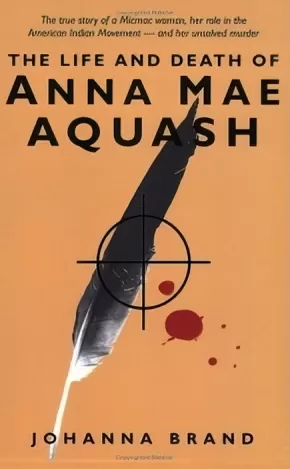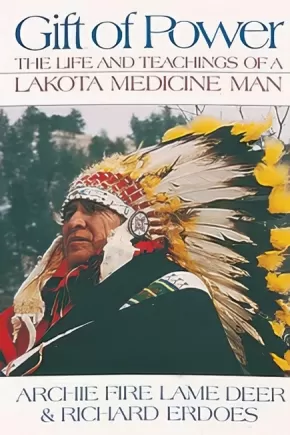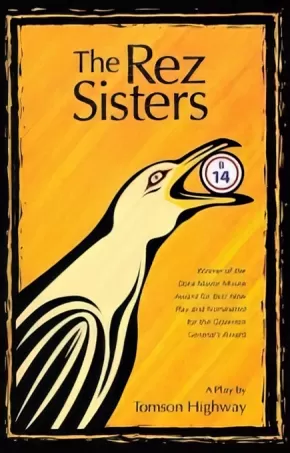
Browse Books for Adults
1906
-
1920
of
1940 Results;
Sort By
Go To
of 130
Grizzlies & White Guys: The Stories of Clayton Mack
$29.95
Format:
Paperback
Text Content Territories:
Indigenous Canadian; First Nations; Nuxalk (Bella Coola);
ISBN / Barcode: 9781550171402
Synopsis:
Synopsis:
The extraordinary life story of Clayton Mack (1910-1993), a legendary hunting guide from the Nuxalk Nation (Bella Coola), is told in his own words. To Clayton Mack, who loved the wilderness and whose most precious memories were of the days when people got around without roads, told time without watches, and took planks from giant cedars without axes, the two most mysterious creatures on earth were grizzly bears and "Q''umsciwas" (white men) - from Crooked Jaw the Indian Agent to the rich and famous men who hired him to guide them on their trophy hunts.
"The tales are told by a natural storyteller, who as a child was carried as a prop in Native ceremonial dances, and who later found himself dining in Hollywood restaurants with California''s most powerful people. His stories are wild and bawdy and funny and tragic, and they reach back through history. They are like native ritual dances, in that it''s impossible to separate the magic from the realism: at the end, you will wonder what was real and what was dream. The arnazing thing is, it''s all true. It''s all true."
-Mark Hume, journalist for the "Vancouver Sun," "National Post" and author of "The Run of the River"
Herbal Teas for Health & Healing (6 in Stock) - ON SALE!
$11.50 $14.50
Format:
Paperback
ISBN / Barcode: 9780892816460
Synopsis:
Synopsis:
Herbal teas have their own characteristic virtues. Some are slightly stimulating, others are soothing and induce quiet sleep or act as tranquilizers. Many are tonics that can bring an "out-of-gear" system back to complete health. The author describes a wide range of tea-making herbs and gives instructions for their preparation and use.
New edition of the classic best-seller.
Additional Information
96 pages | 5.00" x 7.75"
Native American Gardening: Stories, Projects, and Recipes for Families
$41.44
Format:
Paperback
Text Content Territories:
Indigenous American; Native American;
Reading Level: N/A
ISBN / Barcode: 9781555911485
Synopsis:
Synopsis:
Learn how to plan and prepare a garden site, celebrate the harvest, create traditional gardens, such as the "˜Three Sisters Garden" of corn, beans, and squash, and make Native American crafts such as gourd rattles and corn husk dolls, and use its many recipes to cook Native meals.
Additional Information
176 pages | 1.11" x 1.11"
Roots of Survival
$29.95
Format:
Paperback
Text Content Territories:
Indigenous American; Native American;
ISBN / Barcode: 9781555911454
Synopsis:
Synopsis:
As the preeminent Native American storyteller today, Joseph Bruchac has helped to bring the wisdom of Native stories to a widespread audience. Here for the first time he offers his thoughts on the power of these stories, how they have influenced his own life, and how they may help us navigate with hope into the coming century.
Additional Information
|
The Raven Steals the Light
$18.95
Artists:
Format:
Paperback
Text Content Territories:
Indigenous Canadian; First Nations; Haida;
ISBN / Barcode: 9781550544817
Synopsis:
Synopsis:
Ten masterful, complex drawings by Bill Reid are accompanied by ten episodes from Haida mythology told by Bill Reid and Robert Bringhurst. The result brings Haida art and mythology alive as never before in an English-speaking world. The collection includes, says Reid, "a good selection of bestiality, adultery, violence, thievery and assault, for those who like that sort of thing."
Educator Information
This work is available in French: Corbeau vole la lumiere
Additional Information
112 pages | 6.13" x 8.44"
Traplines
$22.00
Format:
Paperback
Text Content Territories:
Indigenous Canadian;
ISBN / Barcode: 9780676970265
Synopsis:
Synopsis:
From a writer whom the New York Times dubbed Canada’s “Generation X laureate” comes a quartet of haunting, unforgettable tales of young people stuck in the inescapable prison of family
A New York Times Notable Book and winner of Britain’s prestigious Winifred Holtby Memorial Prize, Traplines is the book that introduced the world to Canadian author Eden Robinson. In three stories and a novella, Robinson explodes the idea of family as a nurturing safe haven through a progression of domestic horrors experienced by her young, often helpless protagonists. With her mesmerizing, dark skill, the author ushers us into these worlds of violence and abuse, where family loyalty sometimes means turning a blind eye to murder, and survival itself can be viewed as an act of betrayal.
In the title story, for a teenager named Will growing up on a Native reserve in northwestern Canada, guilt, race, and blind fidelity are the shackles chaining him to the everyday cruelty and abuse he is forced to endure. In “Dogs in Winter,” a girl recalls life with her serial-killer mother and fears for her own future. A young teen and the sadistic, psychopathic cousin who comes to live with him engage in a cat-and-mouse game that soon escalates out of control in “Contact Sports,” while in the final story, “Queen of the North,” a young Native girl deals in her own way with sexual molestation at the hands of a pedophile uncle.
Each of these tales is vivid, intense, and disturbing, and Robinson renders them unforgettable with her deft flair for storytelling and a surprising touch of humor.
Educator Information
Recommended Grades: 10-11.
Additional Information
208 pages | 5.32" x 8.03"
Women of the First Nations: Power, Wisdom, and Strength
$24.95
Format:
Paperback
Text Content Territories:
Indigenous Canadian; First Nations;
ISBN / Barcode: 9780887556340
Synopsis:
Synopsis:
"From diversity comes strength and wisdom”: this was the guiding principle for selecting the articles in this collection. Because there is no single voice, identity, history, or cultural experience that represents the women of the First Nations, a realistic picture will have many facets. Accordingly, the authors in Women of the First Nations include Native and non-Native scholars, feminists, and activists from across Canada.
Their work examines various aspects of Aboriginal women’s lives from a variety of theoretical and personal perspectives. They discuss standard media representations, as well as historical and current realities. They bring new perspectives to discussions on Aboriginal art, literature, historical, and cultural contributions, and they offer diverse viewpoints on present economic, environmental, and political issues.
This collection counters the marginalization and silencing of First Nations women’s voices and reflects the power, strength, and wisdom inherent in their lives.
First Nations Education in Canada: The Circle Unfolds
$46.95
Editors:
Format:
Paperback
Text Content Territories:
Indigenous Canadian; First Nations; Métis;
Grade Levels: University/College;
ISBN / Barcode: 9780774805179
Synopsis:
Synopsis:
Written mainly by First Nations and Métis people, this book examines current issues in First Nations education.
Table of Contents
Introduction
Eastern Door: Reconceptualizing First Nations Education
1. Towards a Redefinition of Indian Education
2. Peacekeeping Actions at Home: A Medicine Wheel Model for a Peacekeeping Pedagogy
3. Redefining Science Education for Aboriginal Students
Southern Door: Connecting with and Maintaining Our Relations
4. Aboriginal Epistemology
5. Quaslametko and Yetko: Two Grandmother Models for Contemporary Native Education Pedagogy
6. Language and Cultural Content in Native Education
7. Learning Processes and Teaching Roles in Native Education: Cultural Base and Cultural Brokerage
Western Door: Meeting the Challenge of Incoherence
8. A Major Challenge for the Education System: Aboriginal Retention and Dropout
9. Teacher Education and Aboriginal Opposition
10. The Challenge for Universities
11. Non-Native Teachers Teaching in Native Communities
Northern Door: Transforming First Nations Education
12. Treaties and Indian Education
13. Taking Control: Contradiction and First Nations Adult Education
14. Locally Developed Native Studies Curriculum: An Historical and Philosophical Rationale
15. The Sacred Circle: An Aboriginal Approach to Healing Education at an Urban High School
Bibliography of First Nations Pedagogy
Contributors
Index
Marie Battiste (editor), a member of the Mi'kmaq Nation, teaches in the Indian and Northern Education Department at the University of Saskatchewan.
Jean Barman (editor) is a Professor in the Department of Social and Educational Studies at the University of British Columbia.
Food Plants Of Coastal First Peoples
$26.95
Format:
Paperback
Text Content Territories:
Indigenous Canadian; First Nations;
Reading Level: N/A
ISBN / Barcode: 9780772656278
Synopsis:
Synopsis:
In Food Plants of Coastal First Peoples, renowned ethnobotanist Nancy J. Turner describes more than 100 plants traditionally harvested and eaten by coastal aboriginal groups. Each description contains botanical details and a color photograph to help identify the plant, information on where to find it, and a discussion on traditional methods of harvesting and preparation.
This popular book remains an essential guide for anyone interested in wild edible plants or traditional cultures of First Peoples living on the coast of British Columbia and adjacent areas in Alaska and Washington.
Educator Information
B.C. Science Supplementary Resouce Gr.7- Life Science.
This interesting and informative book contains descriptions and photographs of more than 100 edible plants. There is information to help the reader identify the plants, and also how the Coastal First Peoples used it.
Additional Information
|
Thunder in My Soul
$29.95
Format:
Paperback
Text Content Territories:
Indigenous Canadian; First Nations; Haudenosaunee (Iroquois); Kanyen'keha:ka (Mohawk);
ISBN / Barcode: 9781895686463
Synopsis:
Synopsis:
This book contains the reflections of one Mohawk woman and her struggles to find a good place to be in Canadian society. The essays, written in enjoyable and accessible language, document the struggles against oppression that Aboriginal people face, as well as the success and change that have come to Aboriginal communities. It speaks to both the mind and the heart.
Voices of the Plains Cree
$18.00
Format:
Paperback
Text Content Territories:
Indigenous Canadian; First Nations; Cree (Nehiyawak); Plains Cree;
ISBN / Barcode: 9780889770836
Synopsis:
Synopsis:
When buffalo were many on the western plains, when Cree and Blackfoot warred in unrelenting enmity, when the Sun Dance and the shaking tent were still a way of life these were the days of Chief Thundershild (1849-1927). His stories of a fierce and vanished freedom are reprinted here, exactly as he told them to Edward Ahenakew in 1923. His voice, simple and poetic, resonates with the wide expanse of sky, the song of the wind, the sound of water.
The other voice in this volume is equally moving, but in a very different way. It is the voice of Old Keyam, pained and angry, raised in protest against the Indians' lethargy and the white man's insensitivity. A fictional character, semi-autobiographical, he is very much the voice of Edward Ahenakew, telling of life on the reservations in the new white world of the early twentieth century.
Eagle Transforming: The Art of Robert Davidson (6 in Stock) - ON SALE
$33.75 $45.00
Artists:
Format:
Hardcover
Text Content Territories:
Indigenous Canadian; First Nations; Haida;
Grade Levels: University/College;
ISBN / Barcode: 9780295973715
Synopsis:
Synopsis:
Ulli Steltzer, a distinguished photographer, takes the reader into the carving shed and studio to see Robert Davidson as he creates both monumental poles and intricately detailed powerful masks. More than 100 of her black-and-white photographs, reproduced in duotone, record both the evolution of Davidson and his art, from the early days up to the present, a span of 25 years. In the accompanying text and captions, Robert Davidson writes movingly about growing up Haida and his development as an artist, describes the creative and practical process of carving poles and masks, and discusses the place of art in Haida culture.
An introduction by Aldona Jonaitis assesses Robert Davidson's place in the world of art. Robert Davidson has produced an internationally acclaimed body of art, in particular a number of large totem poles and masks in collections in Canada and the United States, including the Southwest Museum in Los Angeles, the National Gallery of Canada, the Canadian Museum of Civilization, and the Vancouver Art Gallery.
The Life and Death of Anna Mae Aquash
$19.95
Format:
Paperback
Text Content Territories:
Indigenous Canadian; First Nations; Mi'kmaq;
ISBN / Barcode: 9781550284225
Synopsis:
Synopsis:
In February 1976, the body of a woman was found on the Pine Ridge Indian Reservation in South Dakota. The official autopsy attributed her death to exposure. Both hands were severed and sent to Washington for fingerprinting, and the body was hastily buried without legal documents.
When the FBI identified the woman as Anna Mae Aquash, a Canadian Mi'kmaq active in the American Indian Movement, her family and friends demanded a second autopsy. It revealed that Anna Mae had been killed by a bullet fired execution-style into the back of her head.
Anna Mae Aquash worked alongside Leonard Peltier and other leading members of the American Indian Movement. Like Peltier, whose case is now a cause célèbre, Aquash was targeted by the FBI. No serious investigation has ever been undertaken to determine the identities of her murderers, but evidence points to the involvement of American law enforcement officials.
In this second edition of this book, former federal Member of Parliament Warren Allmand contributed a foreword, explaining the links between Peltier and Aquash's cases.
Though some of the information in this book has become outdated as more information became available in 2001 and later about the complex facts surrounding Aquash's death, this book stands as the only publication that tells the story of her life and the puzzling circumstances of her murder.
Gift of Power: The Life and Teachings of a Lakota Medicine Man (2 in stock)
$24.00
Format:
Paperback
Text Content Territories:
Indigenous American; Native American; Sioux; Lakota;
ISBN / Barcode: 9781879181120
Synopsis:
Synopsis:
With surprising candor, Archie Fire Lame Deer describes the magic and power of the Native American spirit life. Archie's compelling narrative recaptures his boyhood years under the tutelage of his medicine-man grandfather on a South Dakota farm. We follow him from Catholic school runaway to Army misfit, from bartender to boozer, from Hollywood stuntman to chief rattlesnake catcher of the state of South Dakota. And we exult with him when he comes home to the world of spirit.
The Rez Sisters
$14.95
Format:
Paperback
Text Content Territories:
Indigenous Canadian;
ISBN / Barcode: 9780920079447
Synopsis:
Synopsis:
This award-winning play by Native playwright Tomson Highway is a powerful and moving portrayal of seven women from a reserve attempting to beat the odds by winning at bingo. And not just any bingo. It is THE BIGGEST BINGO IN THE WORLD and a chance to win a way out of a tortured life.
The Rez Sisters is hilarious, shocking, mystical and powerful, and clearly establishes the creative voice of Aboriginal theatre and writing in Canada today.
Additional Information
118 pages | 5.84" x 8.48"
Sort By
Go To
of 130

